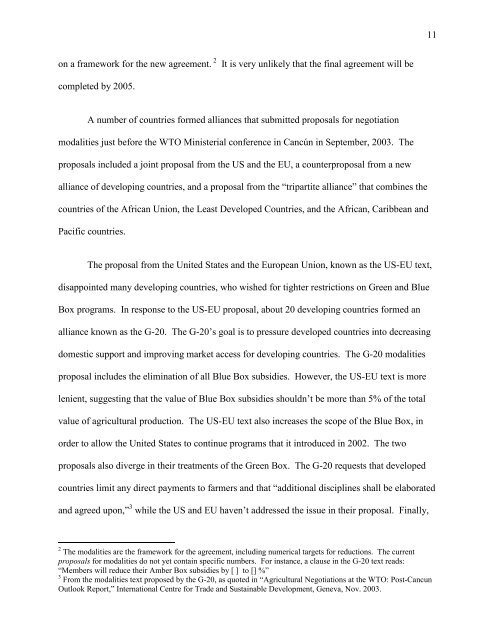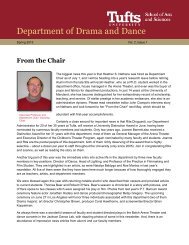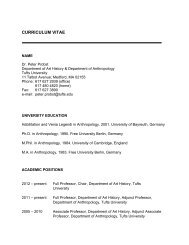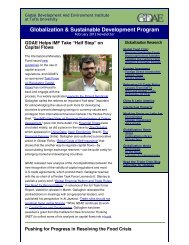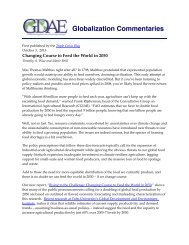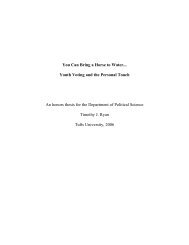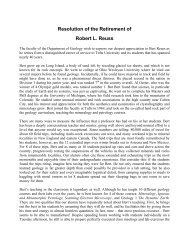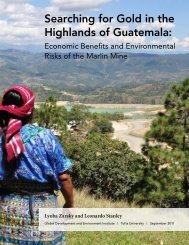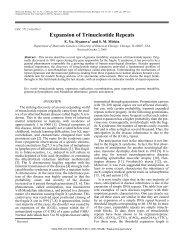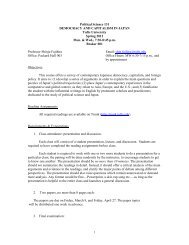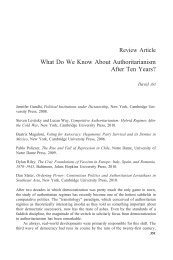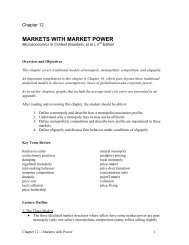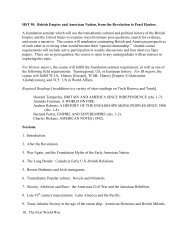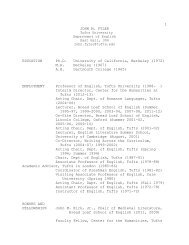The Impact of a New WTO Agricultural Agreement ... - Tufts University
The Impact of a New WTO Agricultural Agreement ... - Tufts University
The Impact of a New WTO Agricultural Agreement ... - Tufts University
You also want an ePaper? Increase the reach of your titles
YUMPU automatically turns print PDFs into web optimized ePapers that Google loves.
11<br />
on a framework for the new agreement. 2<br />
It is very unlikely that the final agreement will be<br />
completed by 2005.<br />
A number <strong>of</strong> countries formed alliances that submitted proposals for negotiation<br />
modalities just before the <strong>WTO</strong> Ministerial conference in Cancún in September, 2003. <strong>The</strong><br />
proposals included a joint proposal from the US and the EU, a counterproposal from a new<br />
alliance <strong>of</strong> developing countries, and a proposal from the “tripartite alliance” that combines the<br />
countries <strong>of</strong> the African Union, the Least Developed Countries, and the African, Caribbean and<br />
Pacific countries.<br />
<strong>The</strong> proposal from the United States and the European Union, known as the US-EU text,<br />
disappointed many developing countries, who wished for tighter restrictions on Green and Blue<br />
Box programs. In response to the US-EU proposal, about 20 developing countries formed an<br />
alliance known as the G-20. <strong>The</strong> G-20’s goal is to pressure developed countries into decreasing<br />
domestic support and improving market access for developing countries. <strong>The</strong> G-20 modalities<br />
proposal includes the elimination <strong>of</strong> all Blue Box subsidies. However, the US-EU text is more<br />
lenient, suggesting that the value <strong>of</strong> Blue Box subsidies shouldn’t be more than 5% <strong>of</strong> the total<br />
value <strong>of</strong> agricultural production. <strong>The</strong> US-EU text also increases the scope <strong>of</strong> the Blue Box, in<br />
order to allow the United States to continue programs that it introduced in 2002. <strong>The</strong> two<br />
proposals also diverge in their treatments <strong>of</strong> the Green Box. <strong>The</strong> G-20 requests that developed<br />
countries limit any direct payments to farmers and that “additional disciplines shall be elaborated<br />
and agreed upon,” 3 while the US and EU haven’t addressed the issue in their proposal. Finally,<br />
2 <strong>The</strong> modalities are the framework for the agreement, including numerical targets for reductions. <strong>The</strong> current<br />
proposals for modalities do not yet contain specific numbers. For instance, a clause in the G-20 text reads:<br />
“Members will reduce their Amber Box subsidies by [ ] to [] %”<br />
3 From the modalities text proposed by the G-20, as quoted in “<strong>Agricultural</strong> Negotiations at the <strong>WTO</strong>: Post-Cancun<br />
Outlook Report,” International Centre for Trade and Sustainable Development, Geneva, Nov. 2003.


